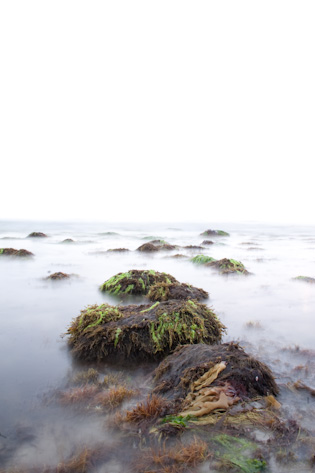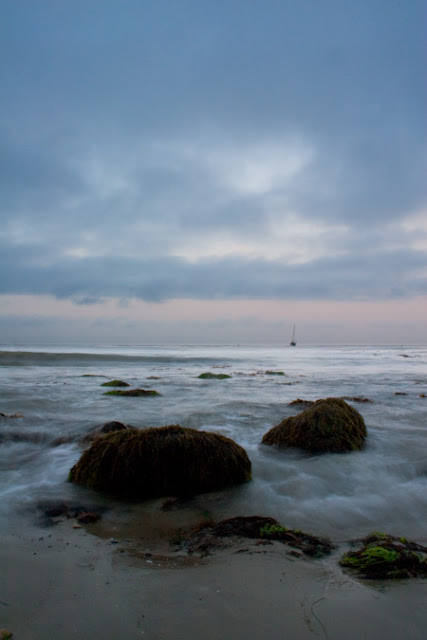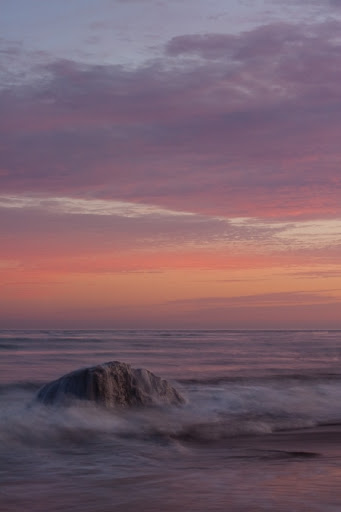
50mm, 1.3 sec at f/22, ISO 200
Just a few days after I spent the morning at Butterfly beach (the subject of my last post), I noticed some beautiful clouds in the sky towards the evening, which could make for a great sunset.
I had obviously already put a lot of energy into photography that week, and felt like I might have had my fill of adventure. I checked the tides anyway, and they were a perfect height for the rocks at Hendry's Beach (about 3ft).
Our house is great for "monitoring" the sunset. Out the front windows we have a great view of the mountains, and you can see how the clouds are looking there. Out our back porch, you can see where the sun goes down, and how the clouds are looking over the ocean.
Still undecided, I kept running back and forth across the house checking the clouds every 5 minutes (this has pretty much become a daily habit). Finally, I couldn't take it anymore, so I got permission to leave my loving wife with the baby, grabbed my gear, and headed to the beach.
After I got back that night, I was convinced I would never pass up another sunset again.
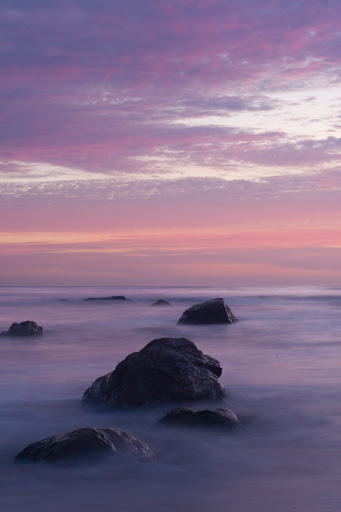
50mm, 6.0 sec at f/22, ISO 100
I hadn't yet had a chance to look over and process my photos from Butterfly, so I hadn't learned all of the lessons from that shoot yet. I had learned, though, to make sure that in my photos the water actually went past the rocks. In a lot of my photos from Butterfly, the water didn't even reach the rocks.
I was a little more careful with my compositions this time around, but it was still pretty frantic. I'd look one way in the sky and say, "wow, look at that!", take a few pictures, then look behind me and say, "oh my gosh, look at that!"
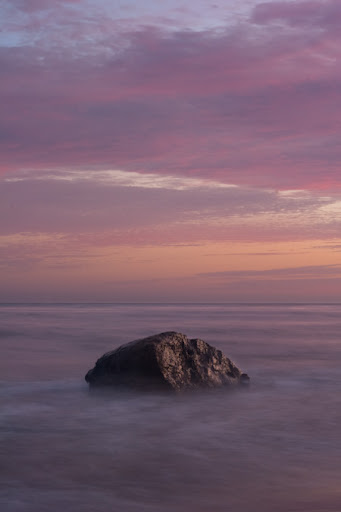
50mm, 5.0 sec at f/22, ISO 100
Looking over the photos, there are definitely a good number that make me wonder what I was thinking when I took them--the compositions are so bad I must have just been trying to fire off shots to capture some cool bit of light in the clouds. But, there were clearly a few that turned out great.
Overall, it was an amazing sunset and I had a lot fun.

18mm, 15.0 sec at f/22, ISO 100
Some thoughts from this outing:
- I came prepared with some shorts and rubber flip-flops; in most of these photos, the waves went up past my feet and left seaweed wrapped around the legs of the tripod.
- I put polarizing filters on the lenses I used. I'm not sure how significant the polarizing effect is in the evening, but the filters protected the lenses and hopefully cut some of the light to allow for longer exposures.
- In composing these seascapes, you have to consider the shape of the clouds! Capturing the colors and the movement of the water is one thing, but taking the shape of the clouds into account makes this tough. Most of the photos just captured a segment of the clouds and their color, but cut off the edges. It would be really great to capture more of the cloud formation and tie it in to the rest of the composition.


